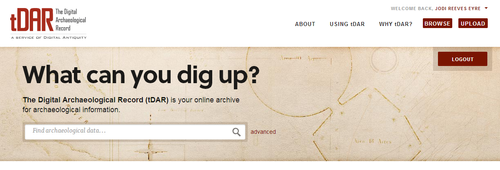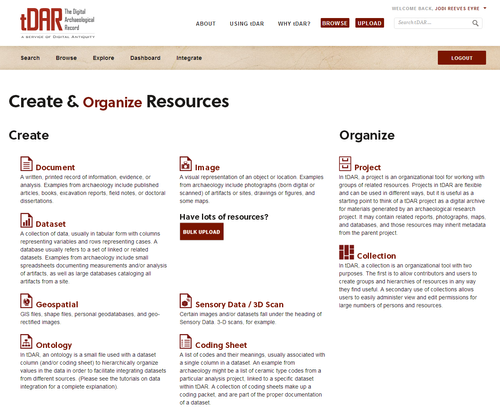| Table of Contents | ||
|---|---|---|
|
Attach GIS Files | ||||||
|---|---|---|---|---|---|---|
Click on the "Add files" button to open up a file window.Select all the files required for your GIS resource, and choose "Open". More than one file can be uploaded at once, and up to 50 files can be uploaded for each GIS resource. If you receive an error, make sure you are uploading the accepted file types.
| ||||||
To delete a file, select the "Delete" button to the right of the file you want to delete. If you accidentally delete a file, don't worry: an "Undelete" button will appear next to a deleted file. | ||||||
RestrictionThe default restriction is "Public". Public files are accessible to all registered tDAR users. Select the drop-down box to change the restrictions to "Embargoed" or "Confidential". | ||||||
Date CreatedThe date this specific file was created. | ||||||
DescriptionAdditional information specific to this file. | ||||||
| Note | ||
|---|---|---|
| ||
tDAR provides two different ways to restrict access to files you upload to tDAR:
To permit other registered tDAR users to download confidential/embargoed files, you must enter their names into the "Access Rights" fields at the bottom of the metadata entry page. You can grant ONLY registered tDAR users the access rights to download these files.
For further information on marking a resource as confidential or placing an embargo, see Managing Security and Access. |
tDAR Collections & Project | |
|---|---|
Add to a Collection (or Collections)Here you may enter the name of the collection that this document is associated with. As you enter the name of the Collection, choices will appear in the drop-down box, select the appropriate Collection See Creating or Editing Collections to learn more about how collections are useful in organizing and displaying your resources. | |
Choose a ProjectIn the "Project" field, use the drop-down box to select the project with which the file is associated. If you used the project toolbar "add new resource to project" button to create the file, the project is already selected for you (see description of creating a file above). If your document is not associated with a project, select "No Associated Project" from the drop-down menu. tDAR will associate your document with your personal information resources. | |
| Tip | ||
|---|---|---|
| ||
When you associate a document with a project, you are accomplishing two things in tDAR:
Inheriting ValuestDAR allows you to "inherit" the metadata that you entered at the project level to describe the documents or other resources associated with that project. Inheriting metadata from the project to the document helps you to simplify your data entry. You will see a checkbox labeled "Inherit values from parent project" in many of the data entry sections on the document page (and on other resource entry pages). Use this checkbox to inherit the relevant values from the associated project to the individual resource. To "inherit" values from the parent project to the document here, check the box labeled "Inherit values from parent project". What if I change the values in my project?If you change any metadata values at the project level, tDAR will update those "inherited" values at the resource level. For example, if you change "Investigation Types" for your project, any resource that inherited "Investigation Types" from that project will be automatically updated. What if I only want to inherit "some" of the values in my project?You can inherit values by clicking on the "inherit values..." box, and then un-select the box to make additional changes that are particular to that resource. For example, you can inherit the spatial information from a project to a related resource. You can then un-select the "inherit values..." box to add or subtract location keyword terms particular to that individual resource. You can also use the project as a template for your resource entry. You can simply enable inheritance to "copy" the values from the project, and then turn inheritance off to make specific changes. For more information on inheritance, please see the section "Inheriting Project Metadata" on the "Creating or Editing a Project" page. |
| Include Page | ||||
|---|---|---|---|---|
|






